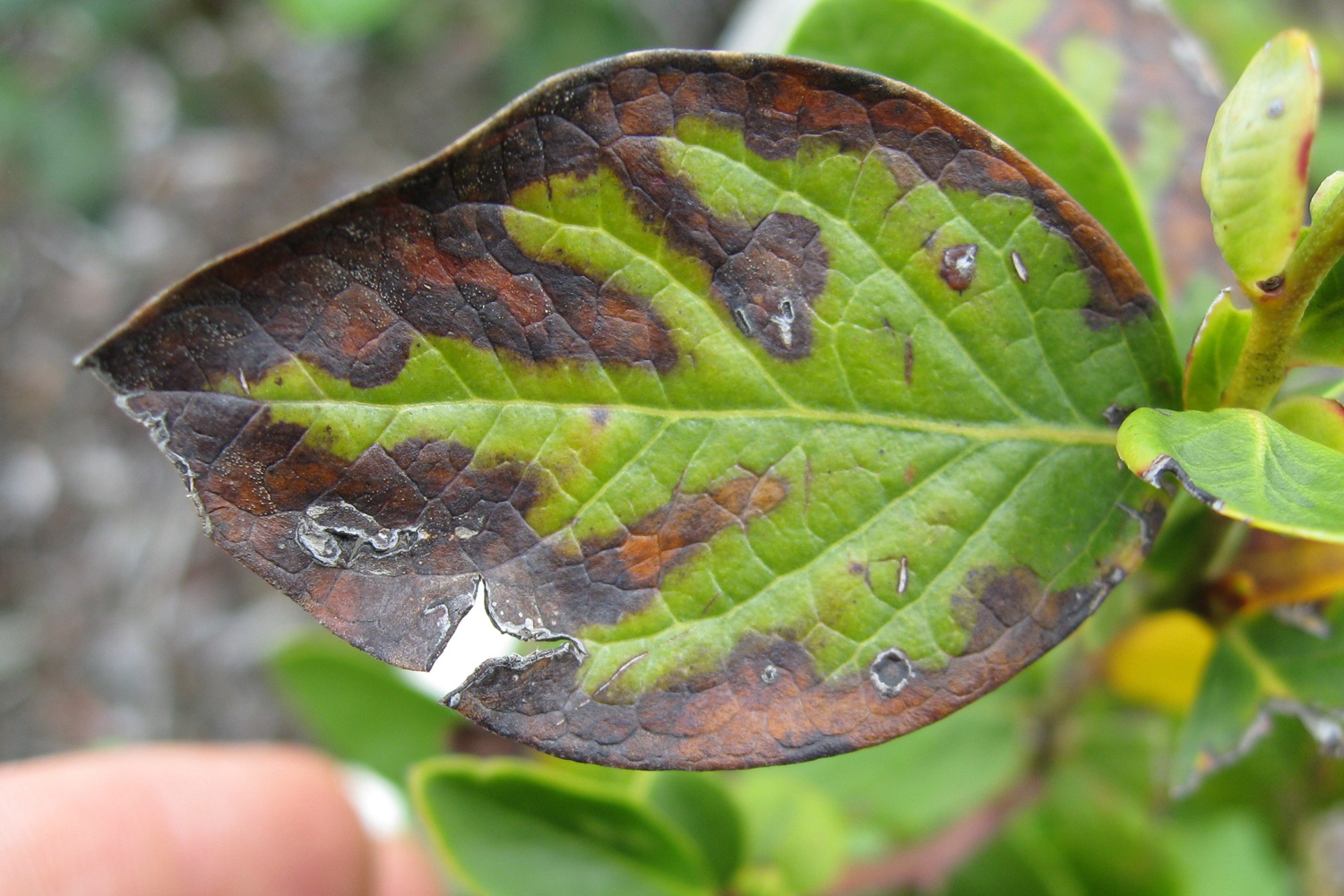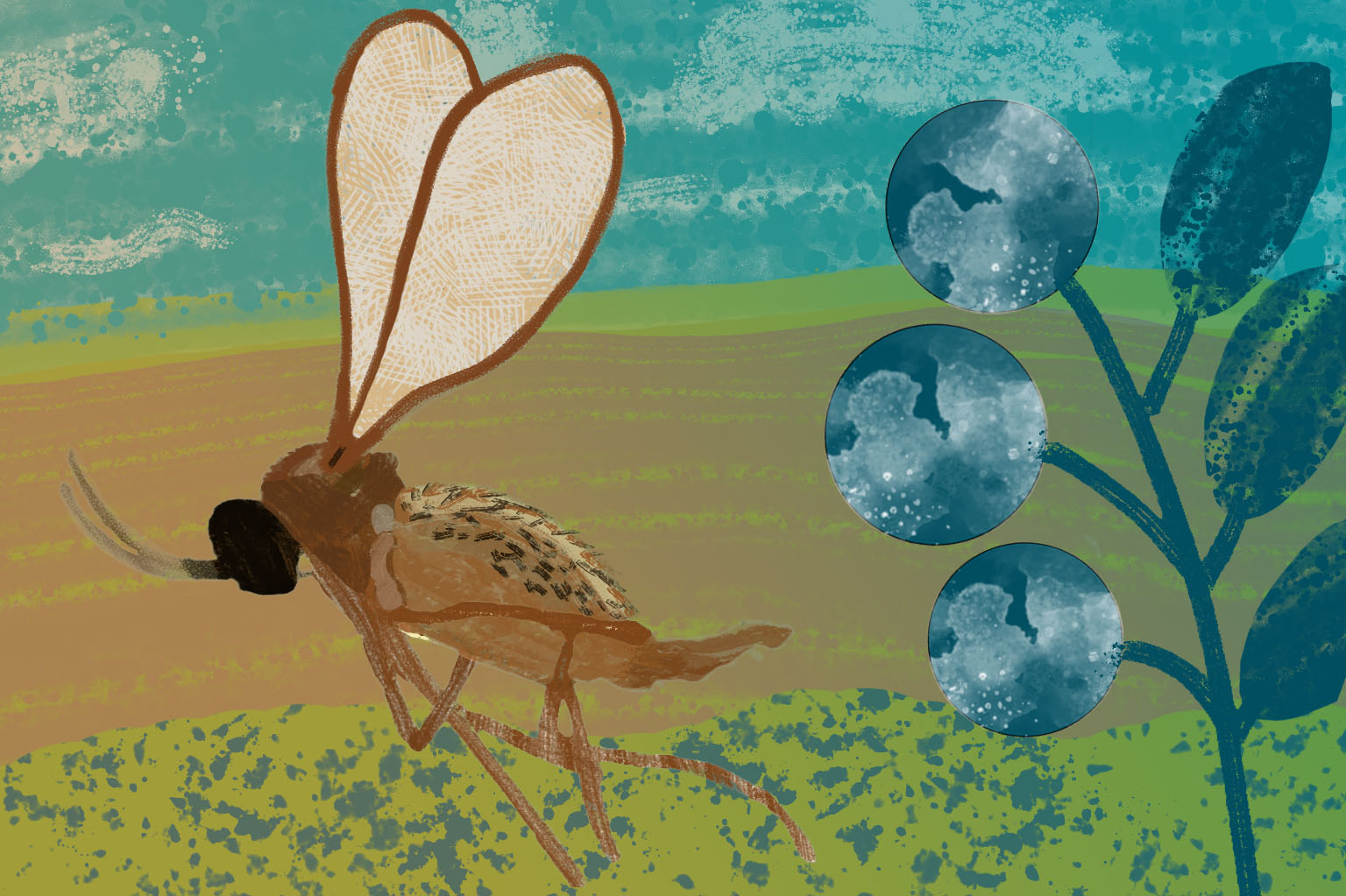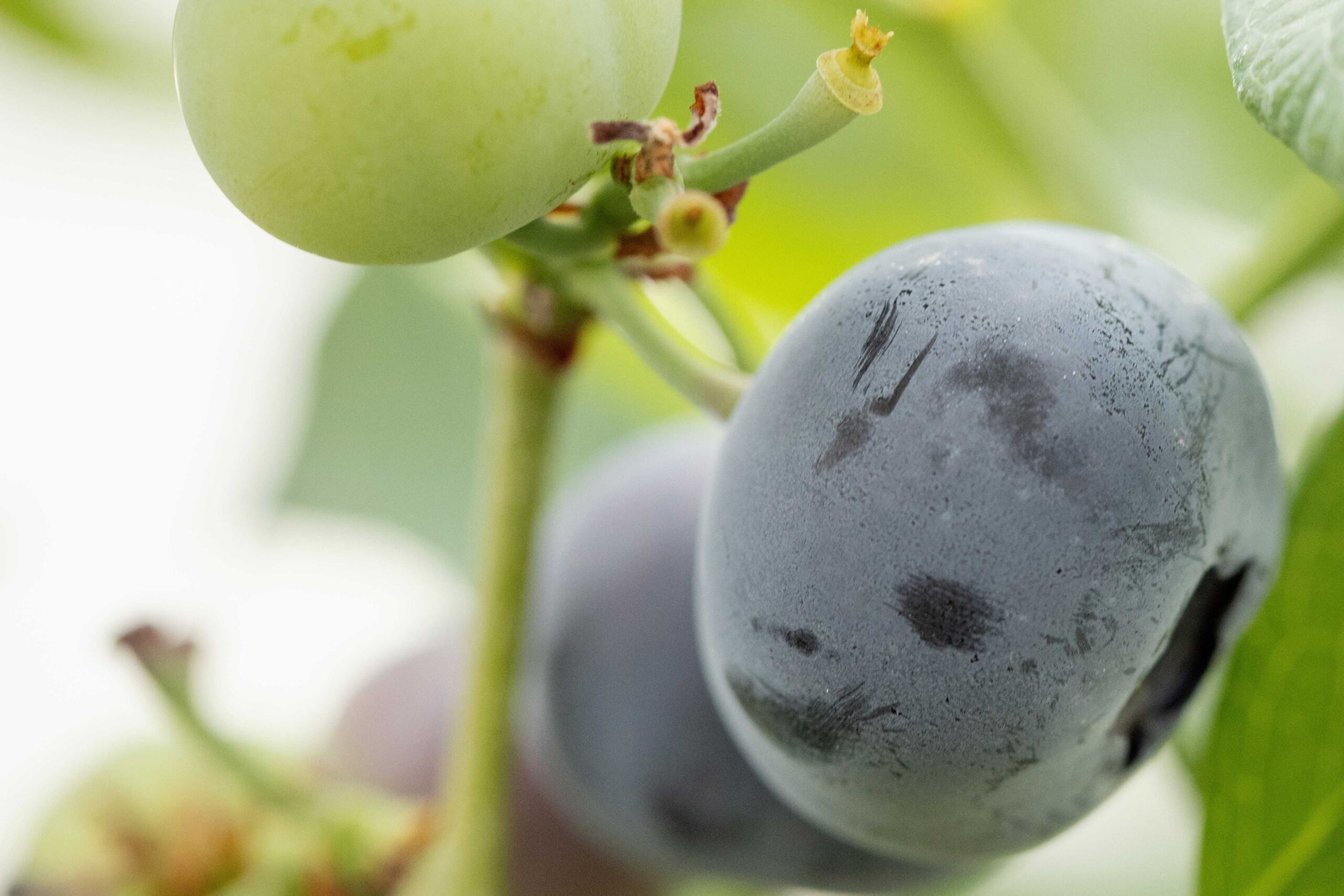Blueberries
-

A new disease has been identified in the Georgia blueberry production region. This disease has been named “bacterial leaf scorch.” This publication includes identification and control methods.
Phillip M. Brannen, Gerard W. Krewer, Robert T. Boland Jr., Dan L. Horton, and Chung-Jan Chang
|
-

Fertilization is an important practice of maintaining plant health. The blueberry plant is no exception, but there are important considerations when fertilizing blueberries. The rates, timing, and type of fertilizer should be common knowledge for the grower. In this circular, how to fertilize blueberry plants is described with text, diagrams, and calculations to provide growers, Extension agents, and anyone interested with the knowledge to successfully grow blueberries, from newly established to mature plantings. This publication was written to address commercial growers’ need for a reference to avoid costly mistakes such as over-fertilization, discussing both granular and liquid fertilization.
James L. Jacobs and Erick Smith
|
-

Exobasidium leaf and fruit spot, caused by the fungus Exobasidium maculosum, is an emerging disease affecting both southern highbush and rabbiteye blueberries. In addition to direct yield loss due to fruit drop, lesions on remaining fruit compromise the aesthetic qualities of the fruit as well as the taste, rendering them unmarketable. This circular provides the most current knowledge of this important pathogen/disease of blueberry and its management.
Phillip M. Brannen, Renee Holland, Russell Ingram, and Jonathan E. Oliver
|
-

This publication outlines the sampling procedure for irrigation water to be used in blueberry production. Follow the outlined steps to provide a certified lab with a sample that is representative of the irrigation water to be used for growing blueberry plants.
Gary L. Hawkins, Wesley Porter, and Erick Smith
|
-

Drip, trickle, microemitters, and subsurface irrigation systems are considered low-volume irrigation. Low-volume irrigation systems are designed to improve irrigation efficiency, delivering water to the crop accurately with minimal water loss. Irrigation efficiency can be categorized into two main concepts: water loss and uniform application. If water loss is significant, or application uniformity is poor, efficiency will be low. Generally, the most significant loss of irrigation water is from overwatering, where the water percolates below the root zone, or from runoff. With good management, losses due to leaks, system drainage, and flushing of filters and lateral lines should not exceed 1%. Low-volume systems have the opportunity to achieve efficiency, and under careful management, will minimize losses from overirrigation. However, using low-volume systems requires increased irrigation frequency and soil moisture monitoring should be used to improve water-use efficiency. This publication covers system design, system efficiencies, components, chemical applications, diseases related to irrigation, and soil moisture monitoring.
Wesley Porter, Jonathan E. Oliver, and Erick Smith
|
-

To be more competitive, Georgia blueberry producers have to increase their yields to match or better the average U.S. values. This increase can occur through an improvement of the agricultural practices and a better mastery of blueberry cultivation. This publication contains information to help Southern Highbush blueberry growers in Georgia maximize their profits.
Gerard W. Krewer, Esendugue Greg Fonsah, John Ed Smith, and R. Danny Stanaland
|
-

Grower experiences have proven milled pine bark to be an excellent growing substrate for southern highbush blueberries. Although milled pine bark shares many characteristics with good blueberry soil, fundamental differences exist and need to be understood for rapid growth of young plants and high blueberry yields.
Gerard W. Krewer, John M. Ruter, and Erick Smith
|
-

Blueberry gall midge, a small fly native to North America, has emerged as one of the serious pests of blueberries in Georgia. Severe gall midge infestations can cause up to 80% crop loss without proper intervention. Bud sampling to monitor for larvae is the only way to confirm its presence. Insecticide sprays need to be timed to target adult midges before they have a chance to lay eggs.
Craig R Roubos and Ashfaq A. Sial
|
-

This publication provides current (2025) Southeast-specific information on approved National Organic Program (NOP) disease and pest management options for blueberry production and addresses the issues most commonly encountered under the unique growing conditions of the Southeast U.S. This publication is not intended to provide all details on organic blueberry production, although it does include the production methods that reduce the impact of plant disease and pest issues.
Emphasis in an organic system should be on cultural practices that reduce disease and pest pressure rather than pesticide applications. NOP-approved pesticides are usually less efficacious than conventional products. The pesticide label is the law and supersedes any information on pesticide use contained in this guide. Because environmental conditions and grower application methods vary widely, suggested use does not imply that the performance of the pesticide will always conform to the pest control standards indicated by experimental data. This publication is a product of the Southern Region Small Fruit Consortium.
Phillip M. Brannen
|